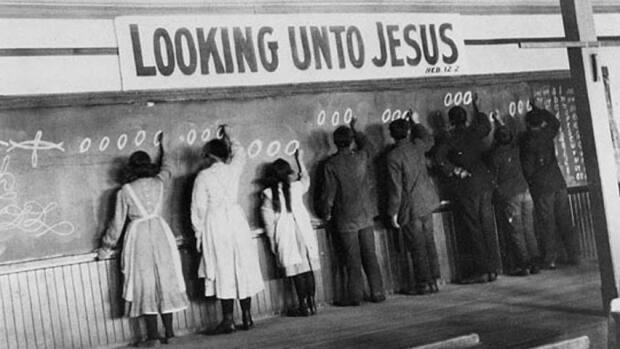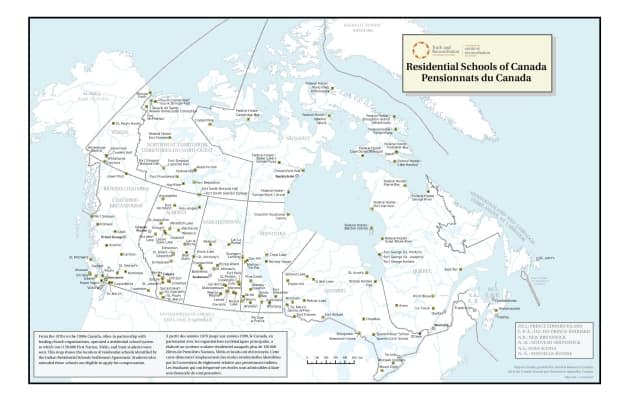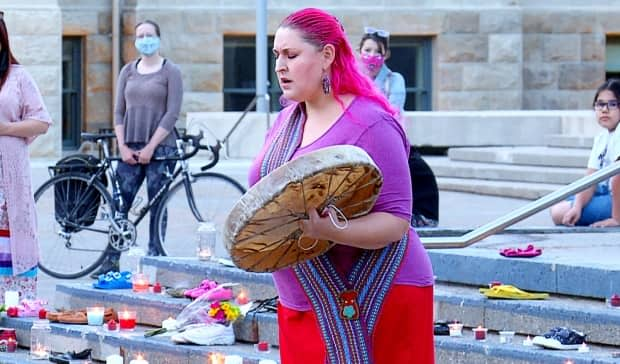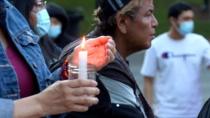More than 800 residential school students died in Alberta — advocates say it's time to find their graves

WARNING: This story contains distressing details
When Jackie Bromley heard that the remains of 215 children were found at the site of a former residential school in B.C., she had flashbacks to her time at St. Mary's Residential School on the Blood Reserve in southern Alberta.
Bromley, who is now 70, remembers students talking about graves behind the school when she was 10 — but doesn't remember seeing any headstones.
"I thought about the backyard, apparently there were some graves there. And the first thing I thought of was, I wonder if there are some kids that were buried, you know?"
Bromley's classmates were right — there were students' graves in the schoolyard. A letter in 1945 from an Indian agent to the school's principal requests that Indigenous workers be made to redig the graves next to the school, to make them even deeper.
The Truth and Reconciliation Commission (TRC) states that it's difficult to place an exact figure on how many residential schools operated in Canada.
Kisha Supernant says it's similarly hard to say just how many unmarked children's graves there are.

Supernant, who is Métis and a descendant of the Papaschase First Nation, is an anthropology professor at the University of Alberta in Edmonton. She and her team use ground-penetrating radar equipment to help Indigenous communities survey burial grounds across the Prairies.
She said remote sensing techniques such as GPR and drones are crucial in surveying unmarked graves to ensure the sites are not physically disturbed.
"There is power in the scientific evidence we can provide. It shouldn't be necessary, communities should be able to be listened to, but I am happy to support communities in that," Supernant said.
"The ownership and access to all the data sits with the community…. This is not showing up and running a piece of equipment…. It's a process of engaging with the community, with being attentive to the sensitivity of what we're doing and the potential impacts it can have."
At least 4,100 children died
Supernant as well as Indigenous leaders and advocates are calling on the federal government to fund the use of GPR equipment at former residential school sites across the country.
"This is part of reconciliation. This is part of the calls to action and I strongly believe that communities should be resourced to do the work that they need and want to do," she said.
The Indian Residential School Settlement Agreement has identified 139 residential schools across Canada — 25 of which were in Alberta. However, that number excludes schools that operated without federal support, such as those run by religious orders or provincial governments. Some schools also underwent name changes, or were relocated.
Click here to see a larger version of the map of residential school locations.

More than 150,000 First Nations, Métis and Inuit children were placed in such schools between the 1870s and 1990s.
At least 4,100 children died while attending school — more than one in 50 students — and the TRC estimates the actual toll could be 6,000 or higher. At least 821 of those deaths were in Alberta.
Linda Many Guns, the associate vice-president of Indigenization and decolonization at Mount Royal University, is descended from residential school survivors. She said research shows many parents were never told what happened to their children — and extensive research will be required to uncover many students' stories.
"There was an extensive pattern of genocide that was deliberately being instituted, not just through these organizations, but also, on a daily basis, through the Indian agents that were overseeing and administering all the reserves," she said.
'Ancestors are asking me to do this work'
A TRC report stated that Indian Affairs was generally opposed to sending the bodies of children who died at school back home, because of the cost. It's estimated that many residential schools have burial sites due to the high death rates — but few have locations that are formally documented, and even fewer are maintained.
The graves found in Kamloops are believed to represent previously unrecorded deaths.
WATCH | Remains of 215 children found on grounds of B.C. residential school:
"These schools were established to forcibly assimilate Indigenous children into Euro-Canadian culture. Underfunded, located in remote places far away from children's home communities, and lacking proper oversight, the schools were plagued by disease, dubious educational outcomes and physical, emotional and sexual abuse," reads an Alberta government resource guide on the schools' history.
For Supernant, the history is personal. She said through her research, she's learned of relatives who attended residential schools.
"I feel quite strongly that the ancestors are asking me to do this work," she said. "It's the most meaningful and important work I will ever do."
The TRC report called on the federal government to create an online registry of residential school burials, and to work with impacted groups to develop a plan for the ongoing identification, documentation, maintenance and commemoration of burial sites.
Funding denied
The TRC did request $1.5 million in funding to search for those unmarked graves in 2009, but that funding was denied by Ottawa.

"Subjected to institutionalized child neglect in life, they have been dishonoured in death," the report reads.
The current federal government has since committed $10 million over seven years to support the national TRC centre's work, and $33.8 million over three years to create registries for residential school deaths and cemeteries.
Kelly McGillis organized a vigil in Calgary over the weekend to honour the children in B.C. and call for action to search for other grave sites.
"We need Canada and everyone to acknowledge that if 215 children have had their lives lost and we have 139 residential schools and all across Canada … where are our leaders in finding out where our ancestors are buried and how we can honour them?"
At the vigil, 215 shoes were set out to represent each child. The City of Calgary has ordered flags to be flown at half-mast.
Bromley, whose parents and grandparents also attended residential school, said being able to honour the lost children would be healing.
"Yeah, I would rather like to know the list [of names]. A proper list."
Support is available for anyone affected by the effects of residential schools, and those who are triggered by the latest reports.
The Indian Residential School Survivors Society (IRSSS) can be contacted toll-free at 1-800-721-0066.
A national Indian Residential School Crisis Line has been set up to provide support for former students and those affected. People can access emotional and crisis referral services by calling the 24-hour national crisis line: 1-866-925-4419.






